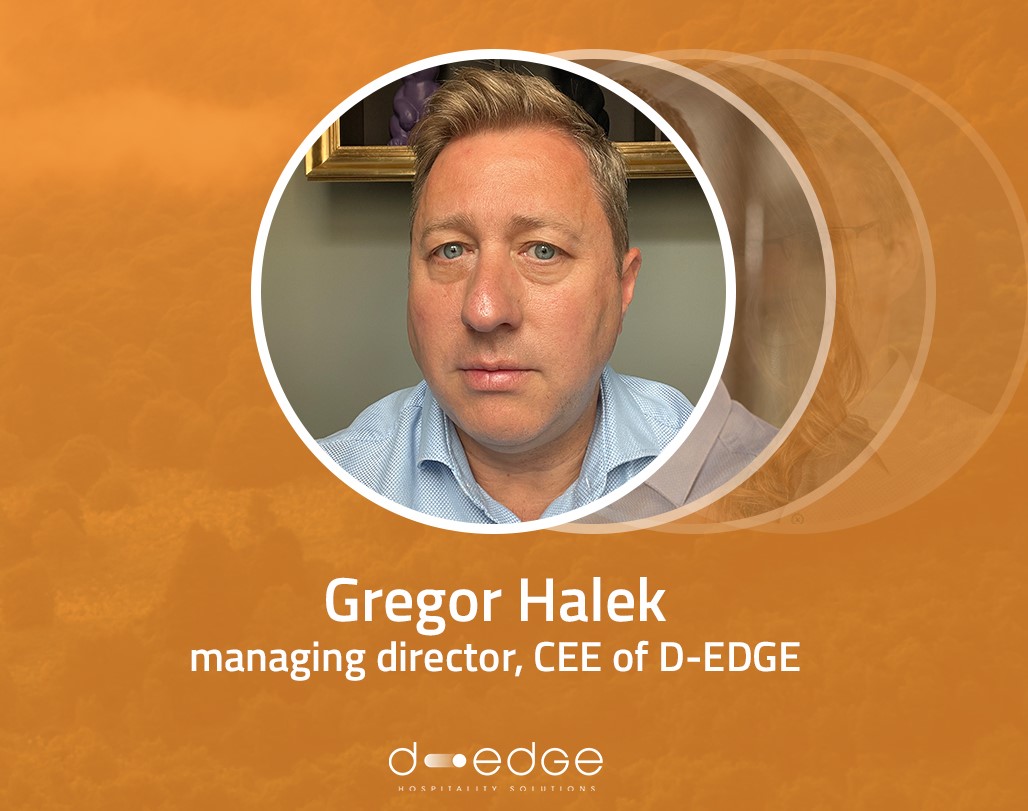What’s next for tourism in the Central and Eastern European region?
How do the biggest digital service providers see the CEE hospitality market?
Despite the increasing accommodation prices, the global inflation and the war in the neighborhood, tourism is back on track in the CEE region. It’s not just the number of active bookings that exceeds all previous 3 years, but cross-country travel related searches also grew by 41% this spring. Hoteliers should follow the digitization trends as by 2026, the share of online gross booking value will reach 97% in the inbound tourism segment. After two years of covid-closure, 90+% of people wish to travel in 2022, mostly within the region.
Szallas Group, Google, Previo and D-EDGE have held their first joint webinar about the future possibilities and challenges of tourism in the CEE region.
Rewatch the presentations here!First, József Szigetvári, CEO of Szallas Group presented the changes in customer habits, based on their latest regional research conducted in cooperation with Nielsen. As he highlighted, by 2021 the desire to travel has increased in all countries (HU, CZ, PL, RO) to more than 90%. The willingness of tourists to self-organize domestic trips grew by 7-18%. There is a change in the prefered accommodation types as well: the trend of ‘non-hotelization’, choosing separate, private apartments and guest houses instead of hotels, strengthened due to Covid. Then, Szigetvári talked about the growing importance of digitization in the region:
“CEE tourism has shifted towards online reservations as the share of online gross booking value grew from 27% to 56% in the domestic, and from 40% to 65% in the inbound tourism segments between 2014 and 2022. Digitization trend will further grow in the region thanks to local government initiatives and to the rising share of the population that travels for holiday in different CEE countries. By 2026, according to our estimations, the share of online gross booking value will grow from 56% (2022) to 63% in the domestic, and from 65% to 97% in the inbound tourism segments.”

Then Anna Moldován, Industry manager from Google presented some trends of CEE travel search demand, showing that tourism is back on track: tourism and accommodation category domestic searches are above 2019 levels in 2022 in the region. Cross-country travel and tourism related searches in CEE grew by 41% from March to April after a considerable drop at the end of February (the start of the Ukrainian war). Anna also mentioned the top destinations in the region based on Google searches. In Hungary, Balaton is the biggest winner (with 110% growth in case of Balatonfüred compared to 2019 Jan-April period), in Czechia people focus more and more on tourist attractions in their searches (the search interest towards Dvůr Králové nad Labem Safari park and Pec pod Sněžkou ski resort are up by 80+%), while in Poland agrotourism is one of the growing trends in the recent years.
“We see that the new theme for travel in 2022 is to ‘go big’ and make up for the time lost, the travels postponed after years of staying at home and focusing mainly on domestic trips. The war in Ukraine is creating new concerns, so 2022 is the year of two moods: optimism and uncertainty. Presumably, cross-country travels will further increase this year.” – explained Anna Moldován.

Pavel Kotas, CEO & founder of Previo hotel software, highlighted that tourists in the CEE region are starting to dare to plan their travels again; while in 2021, the booking window (how soon people book their travels before their arrival) dropped by 18% due to the uncertainties of Covid closures, this year the window is longer again by 5%. The main season (July & August) occupancy trend seems promising, as the share of summer bookings hotels received before May 30 of all the room nights which were realized that summer probably will exceed the 2019 results in Czechia, Hungary and Poland too.
“We predict that last-minute prices might go up as the summer of 2022 might be better than 2019, the year before Covid started. Although hoteliers are afraid to raise the prices too much as inflation is eating people’s money and they could start crossing out unnecessary expenses – including travels -, their margins are going down due to the cost increase, so early-bird bookers probably got much better prices than some of the last-minute bookers will get.” – stated Pavel Kotas.

Finally, Gregor Halek, Managing Director, CEE of D-EDGE confirmed the others’ findings by showing that on a regional level, the booking volume doubled compared to 2021 and that bookings are recovering in the domestic and the inbound segments as well. While domestic is staying strong, inbound tourism is spiking and coming back up significantly from 2021, especially now that corporate travel is starting to come back as well and international restrictions are lowered.

During the panel discussion, all the presenters agreed that the time has come for domestic and cross-country tourism in the CEE region. If people can travel, they will – mostly using online bookings, so hoteliers should keep up with the digitization trends.

